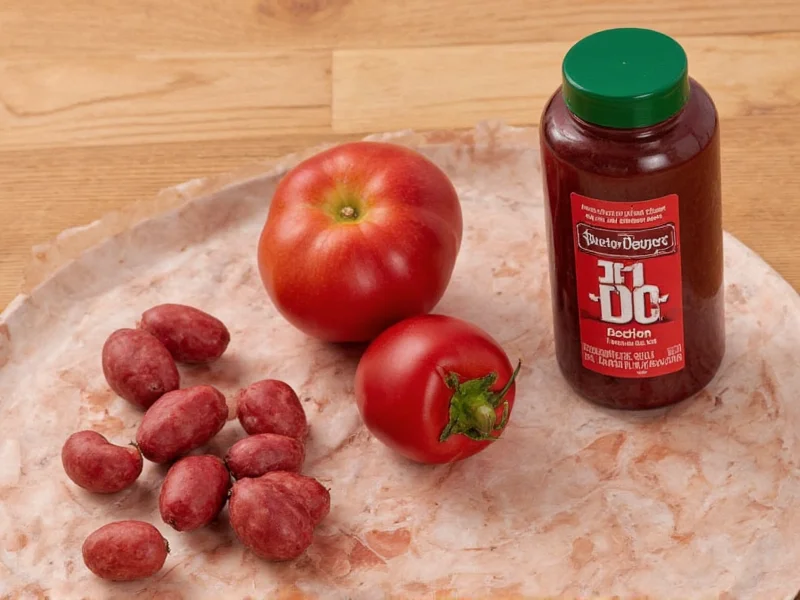Understanding the nutritional profile of popular beverages helps make informed dietary choices. Dr Pepper, a widely consumed soft drink with a distinctive flavor blend, maintains a consistent nutritional profile across its regular formulations. The 150 calories found in a standard 12-ounce serving come exclusively from carbohydrates, specifically from high fructose corn syrup or sugar depending on the product variant and regional formulation.
Nutritional Breakdown of Dr Pepper
When examining how many calories are in Dr Pepper soda, it's essential to consider the complete nutritional context. Each 12-ounce serving provides:
| Nutrient | Amount per 12 fl oz (355ml) | % Daily Value* |
|---|---|---|
| Calories | 150 | 8% |
| Total Fat | 0g | 0% |
| Sodium | 45mg | 2% |
| Total Carbohydrates | 40g | 15% |
| Sugars | 40g | ** |
*Percent Daily Values are based on a 2,000 calorie diet. **Daily Value not established for sugars.
Serving Size Considerations
The calories in a can of Dr Pepper are calculated based on the standard 12-ounce serving size used for nutritional labeling. However, actual consumption patterns often differ:
- Single-serve cans typically contain 12 ounces (150 calories)
- 20-ounce plastic bottles contain approximately 250 calories
- 32-ounce fountain drinks contain about 400 calories
- Mini cans (7.5 ounces) contain about 90 calories
Many consumers don't realize that larger serving sizes common in restaurants and convenience stores significantly increase the calorie count of Dr Pepper beyond what appears on standard nutrition labels.
Comparing Dr Pepper to Other Popular Sodas
When evaluating Dr Pepper nutrition facts per serving, it's helpful to compare with other leading soft drinks. The following table shows calorie content for standard 12-ounce servings:
| Beverage | Calories (12 fl oz) | Sugar (grams) |
|---|---|---|
| Dr Pepper | 150 | 40 |
| Coca-Cola | 140 | 39 |
| Pepsi | 150 | 41 |
| Sprite | 140 | 38 |
| Mountain Dew | 170 | 46 |
This comparison shows that Dr Pepper's calorie count of Dr Pepper compared to other sodas falls in the middle range, with Mountain Dew containing the most calories and sugar among major brands.
Dietary Context for Dr Pepper Consumption
For individuals monitoring their calorie intake, understanding where Dr Pepper calories in 12 oz can fit within daily nutritional goals is essential. The American Heart Association recommends limiting added sugars to no more than 25 grams per day for women and 36 grams for men. A single 12-ounce Dr Pepper contains 40 grams of sugar, exceeding these recommendations.
Nutritionists often advise that liquid calories don't provide the same satiety as solid foods, potentially leading to overconsumption of calories without feeling full. The 150 calories in a standard Dr Pepper serving could represent a significant portion of a calorie budget for those managing weight.
Sugar Content and Health Considerations
The primary source of calories in regular Dr Pepper comes from its sugar content. Understanding how many carbs in Dr Pepper reveals that all 40 grams of carbohydrates come from added sugars. Regular consumption of sugar-sweetened beverages has been associated with various health concerns including:
- Increased risk of type 2 diabetes
- Higher likelihood of weight gain and obesity
- Potential contribution to dental problems
- Association with metabolic syndrome
For those seeking lower-calorie alternatives, Dr Pepper offers several options including Diet Dr Pepper (zero calories), Dr Pepper Ten (10 calories), and various sugar-free variants that maintain the distinctive flavor profile with significantly reduced calorie content.
Reading Nutrition Labels Effectively
When determining is Dr Pepper high in calories, always check the actual serving size on the nutrition label, as this can vary between packaging formats. Many consumers mistakenly believe they're consuming a single serving when they finish an entire bottle that actually contains multiple servings.
Nutrition labels now clearly distinguish between "servings per container" and "servings size," making it easier to calculate total calories consumed. For accurate tracking, multiply the calories per serving by the number of servings consumed.











 浙公网安备
33010002000092号
浙公网安备
33010002000092号 浙B2-20120091-4
浙B2-20120091-4